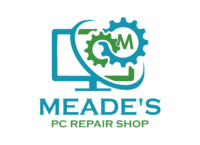It is easy to make mistakes in your first PC build. With anything complex, there are small, common and crucial elements to bear in mind throughout the entire process. However, thanks to a wealth of information gained from countless IT enthusiasts before you, there are many PC-building tips that can be learned which will save you time, but potentially money too. Here are some of the most important guidelines to consider.
1. Incompatible Parts
Even the most knowledgeable PC builder can be tripped up by parts that aren’t compatible. It’s easy to get swamped in the colossal amounts of jargon between each highly specialized part and to make a mistake in regards to compatibility. There are several available resources that you can check to ensure that your parts are compatible.
2. Insufficient Power
When choosing your parts it’s tempting to skimp out on the power supply so that you can buy more expensive CPU’s or GPU’s. This is a crucial mistake. If your power supply can’t sufficiently supply power to every part of the PC then nothing will work at all.
3. Cable Management
There’s plenty to consider when building a PC, but being careful with the simple stuff will prove more than valuable. Buy some cable ties before you begin the build. At the start, it’ll look simple, but soon enough there’ll be so many cables it’ll be hard to account for every cable without appropriate sectioning.
4. Ports Firmly Connected
When your parts first arrive you’ll want to be delicate with everything. Unfortunately, some of your parts require them to be pushed firmly into the respective slots which can feel counter-intuitive with expensive hardware. Usually you’ll hear a distinctive click when the module is connected properly. Read the manuals thoroughly then be confident when you apply the parts.
5. GPU not properly installed
Modern GPU’s are big, sometimes even the largest part of the entire build (save the case). The GPU will take up the width of the case, and that means the steel portion on one end needs to be implemented into the actual physical PC case. If you don’t push the GPU the whole way into the motherboard by stripping away a small section of the case, the PC won’t have a working video card.
6. Static Safety
When you build non-electrical items, static isn’t something to worry about, but for PC’s static is a top concern. A single static charge from your fingers can fry whole components. Build the PC on a non-carpeted surface, ground yourself regularly and buy an anti-static wristband.
7. I/O Shield
The I/O shield is a small steel shield that’ll come with your motherboard. Install this into the PC case before putting the motherboard in. It’s almost impossible to install afterwards, which means you’ll have to take the whole motherboard out again to fix the mistake.
8. Be careful when installing Motherboard
Each case will have different standoff configurations. Figure out how that configuration relates to your motherboard before installing. If you start a current while a metallic standoff is touching your motherboard, you risking frying all your parts.
9. PSU Power Button
A frustratingly simple mistake to make. Before hitting the power button for the first time, make sure the power button the PSU is switched to the ON position.
10. Segregate the Screws
You’ll be given a lot of similar looking screws with all your parts. Do not lose them, and keep them all separate. Use plastic tubs to make sure that they’re all safely stored while I’m building.
Building a PC can be daunting, but being safe rather than sorry will always pay off no matter what stage of the build you’re at.
Guest Blogger | Jackie Edwards



Recent Comments